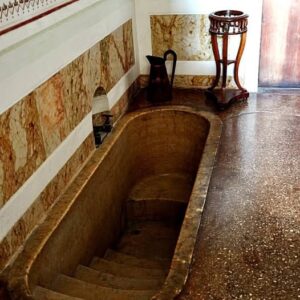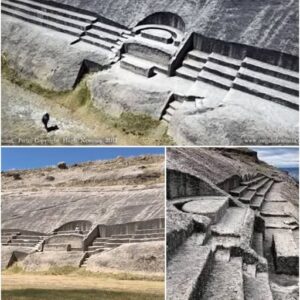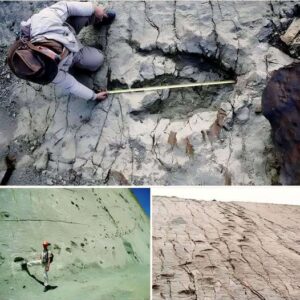Por-Bazhyn, meaning “clay house,” stands as a fascinating archaeological enigma in the heart of Siberia, Russia. This ancient fortress-like structure, constructed circa 777 AD, during the Uyghur Khaganate era, exudes an aura of mystery and intrigue. Situated on an island in Lake Tere-Khol, Por-Bazhyn covers a vast 7.5-acre expanse encompassed by imposing 10-meter walls.
The architectural design of this site showcases a blend of Uyghur and Tang Dynasty influences from China, with its rectangular layout boasting multiple tiers and intricate passageways that hint at a grand architectural ambition.

Despite its grandeur and sophistication, the exact purpose of Por-Bazhyn remains shrouded in uncertainty. Archaeological observations reveal a peculiar absence of ordinary artifacts, tools, or pottery within its confines, sparking theories that the structure may have been hastily abandoned shortly after completion or never fully utilized. Moreover, traces of natural disasters, such as earthquake damage and fire scars, bear testimony to the challenges that may have hastened its demise.
Perched over 1,300 meters above sea level amidst a rugged mountainous terrain, Por-Bazhyn’s isolated location adds another layer of intrigue to its enigmatic past. The decision to erect such an elaborate edifice in such a remote and inaccessible locale raises questions about the motivations behind its construction and the intended occupants of this ancient stronghold.
Evidently, Por-Bazhyn continues to capture the imagination of historians, archaeologists, and visitors alike, beckoning us to unravel the mysteries concealed within its ancient walls. As we gaze upon this silent sentinel of a bygone era, we are reminded of the enduring enigma that is Por-Bazhyn – a testament to the ingenuity and mysteries of our distant past.





